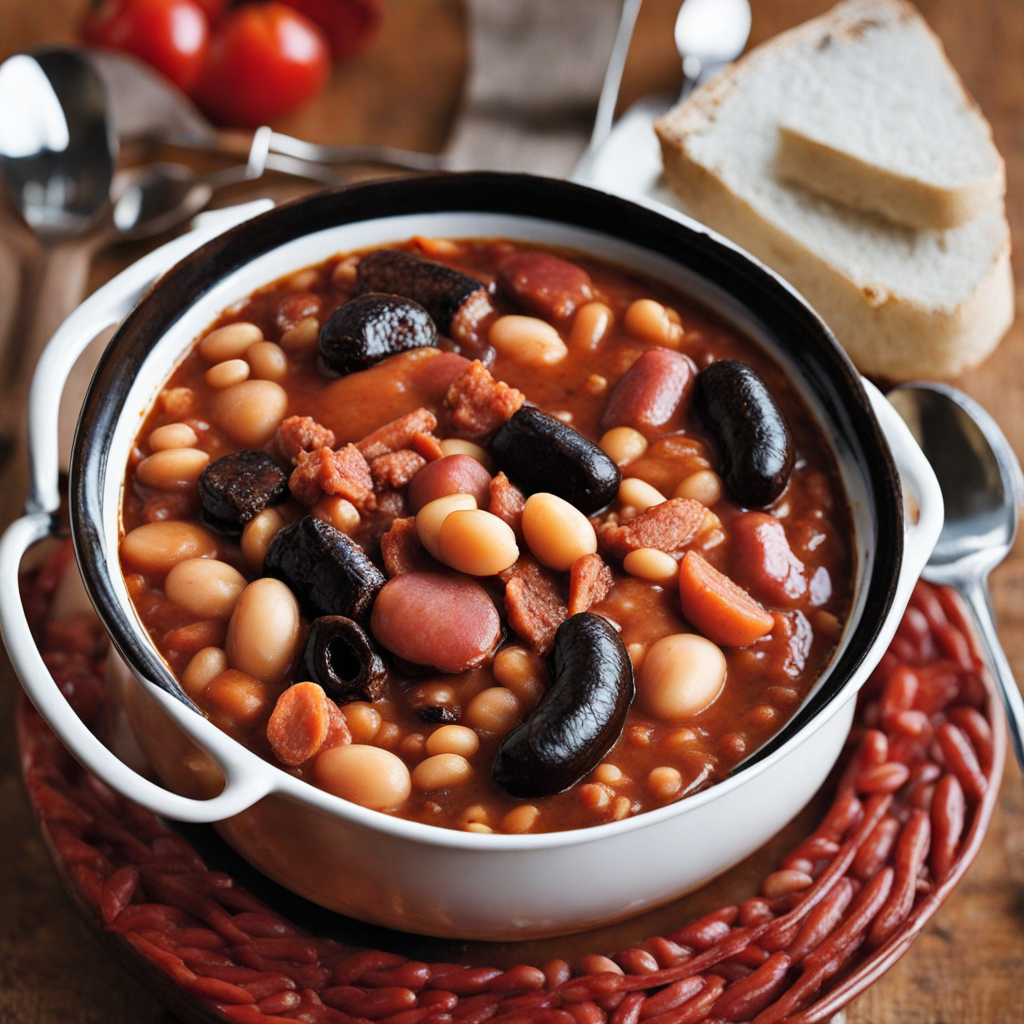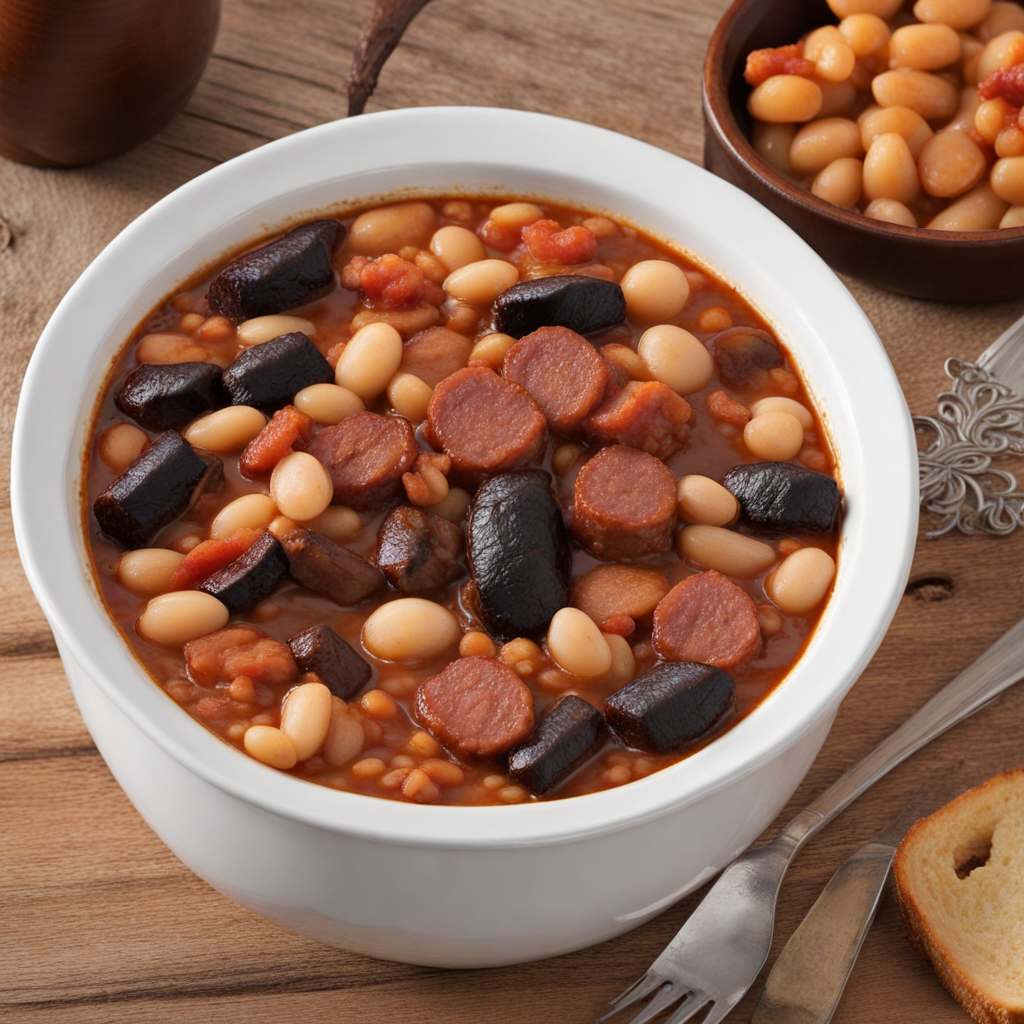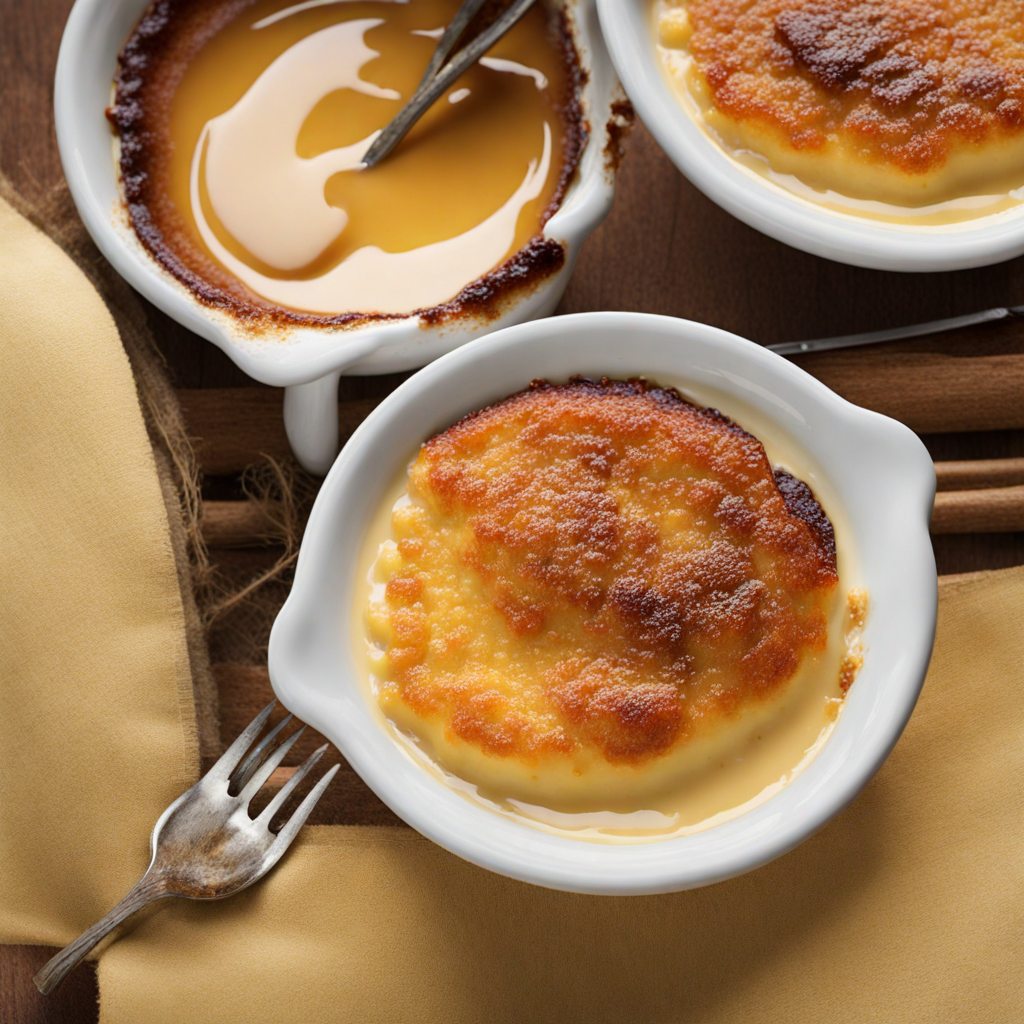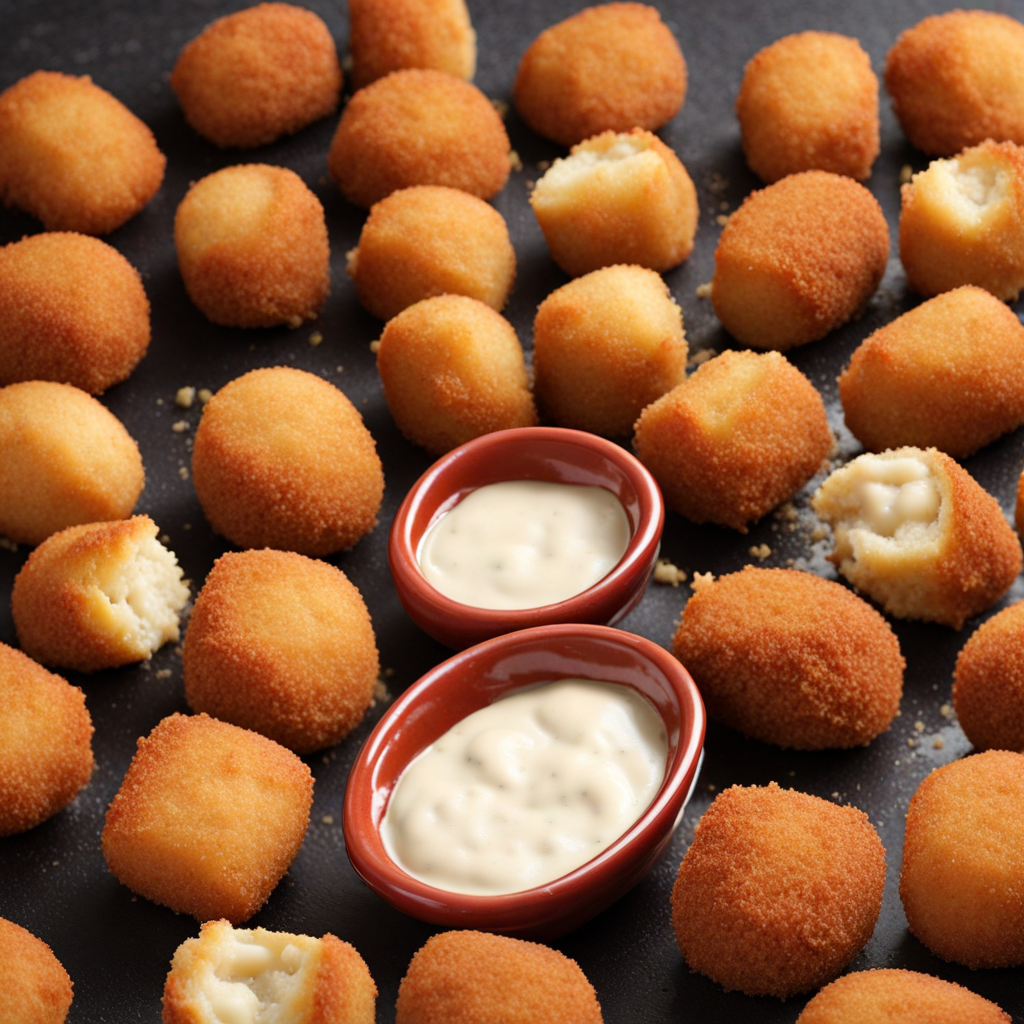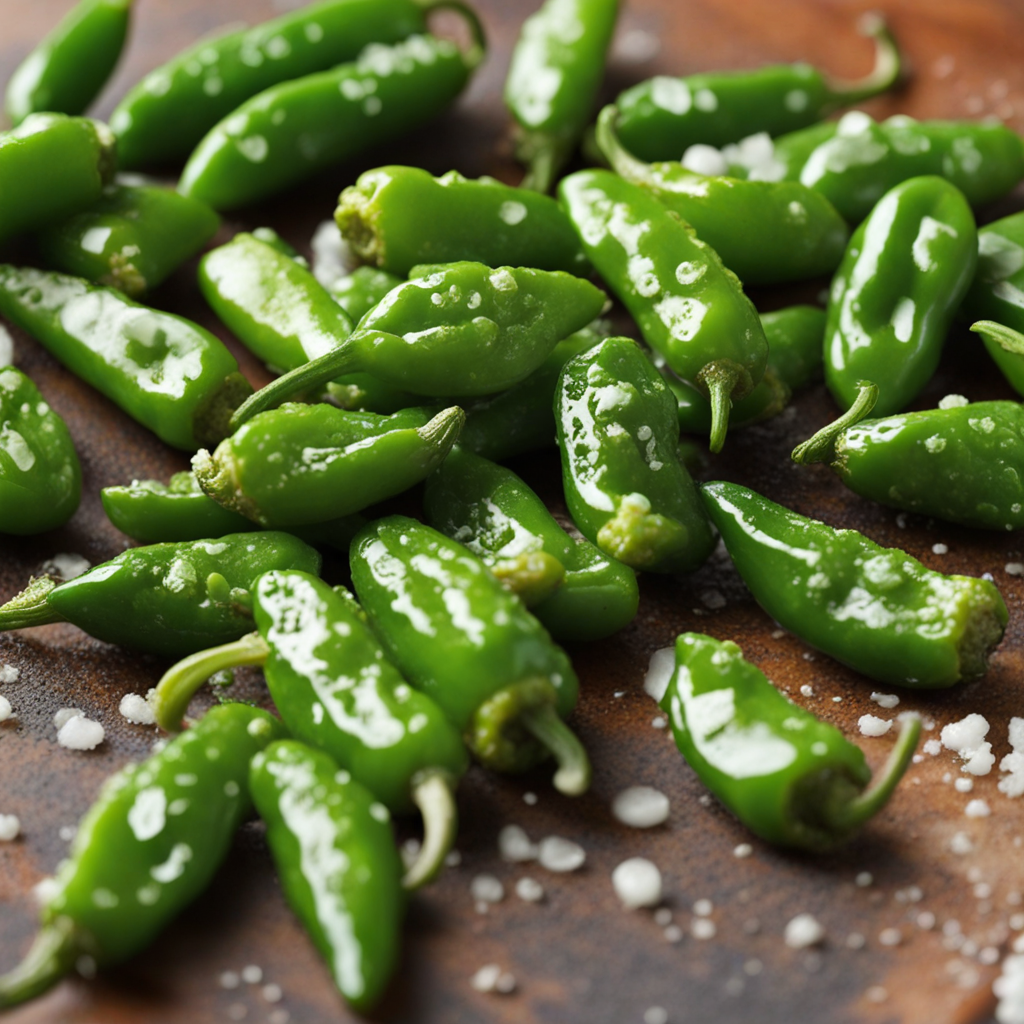Fabada Asturiana
Fabada Asturiana is a traditional Spanish stew that hails from the picturesque region of Asturias, known for its lush landscapes and rich culinary heritage. This hearty dish showcases the robust flavors of white beans, specifically the native fabes de la Granja, which are large, creamy, and slightly nutty in flavor. The beans are slow-cooked to tender perfection, absorbing the essence of the ingredients that surround them. The base of the stew is typically enriched with a variety of meats, including chorizo, morcilla (blood sausage), and sometimes pancetta or pork belly, each contributing its unique smoky and savory notes to the dish. As the dish simmers, the combination of spices and aromatics creates a deeply satisfying broth that is both comforting and nourishing. The addition of onion, garlic, and paprika lends warmth and depth to the stew, while a touch of saffron can elevate the flavor profile with its distinct aromatic qualities. The result is a rich, flavorful concoction that embodies the essence of Asturian cuisine, making it perfect for sharing during family gatherings or festive occasions. Fabada Asturiana is more than just a meal; it is a celebration of rustic cooking that invites you to savor each bite. Served hot, often accompanied by crusty bread and a glass of local cider, this dish captures the spirit of the Asturian culture. Its hearty nature makes it a favorite during colder months, warming both the body and soul. As you discover Fabada Asturiana, you will experience a symphony of flavors that reflect the traditions and love for food that define this beautiful region of Spain.
How It Became This Dish
Fabada Asturiana: A Culinary Journey Through Time Nestled in the lush green hills of northern Spain, Asturias is a region famed for its breathtaking landscapes, rich folklore, and, most importantly, its hearty cuisine. Among the many dishes that define Asturian gastronomy, one stands out as a symbol of cultural pride and culinary tradition: Fabada Asturiana. This rich, comforting bean stew encapsulates the essence of Asturian life, reflecting the region's agricultural heritage, cultural influences, and the communal spirit of its people. Origins of Fabada The roots of Fabada Asturiana can be traced back to the 16th century, although its exact origins remain a topic of debate among historians. The dish is primarily made from fabes, or large white beans, which are cultivated in the fertile soils of Asturias. These beans, particularly the "faba asturiana de la granja," have been a staple ingredient in local diets for centuries. The use of beans in Spanish cuisine is ancient, with evidence of their cultivation dating back to pre-Columbian times. The introduction of pork products, such as chorizo, morcilla (blood sausage), and lacón (cured pork shoulder), is believed to have been influenced by the region's pastoral lifestyle. The Asturians, primarily farmers and shepherds, would utilize these ingredients to create a hearty stew capable of sustaining them through the long, cold winters. The dish was often prepared during communal gatherings or festive occasions, serving as a symbol of hospitality and togetherness. Cultural Significance Fabada Asturiana is more than just a meal; it embodies the spirit of Asturias. Traditionally served during celebrations such as weddings, harvest festivals, and Christmas, it represents the region's agricultural bounty and the importance of community in Asturian life. The dish is also a testament to the resilience of the Asturian people, who have weathered economic hardships and social changes while maintaining their culinary traditions. In Asturias, the preparation of Fabada is often a collective endeavor. Families gather in the kitchen to prepare the ingredients, sharing stories and laughter as they work together. This communal aspect of cooking is crucial, as it fosters a sense of belonging and connection to one’s roots. The act of sharing a pot of Fabada around the table is a celebration of togetherness, reflecting the values of hospitality and generosity deeply embedded in Asturian culture. Ingredients and Preparation At its core, Fabada Asturiana consists of three key components: fabes, meats, and spices. The beans are the star of the dish, prized for their creamy texture and ability to absorb flavors. The pork products, particularly the flavorful chorizo and morcilla, impart a depth of taste that transforms the dish into a hearty and satisfying meal. The use of saffron and paprika enhances the flavor profile, adding a warm, aromatic quality to the stew. The preparation of Fabada is relatively straightforward, yet it requires patience and attention to detail. The beans are first soaked overnight, then simmered slowly with the meats, allowing the flavors to meld beautifully. The dish is traditionally cooked in a clay pot, which helps to evenly distribute heat and preserve the delicate flavors. It is common for families to pass down their own variations of the recipe, with each household adding its unique touch, whether it’s a specific type of sausage or a secret blend of spices. Evolution Over Time As with many traditional dishes, Fabada Asturiana has evolved over the centuries. The industrialization of agriculture and the migration of people from rural areas to urban centers have influenced the way the dish is prepared and consumed. In the mid-20th century, Fabada began to gain recognition beyond Asturias, thanks in part to the growing interest in regional Spanish cuisines. In the 1980s and 1990s, as Spain experienced a culinary renaissance, Fabada Asturiana found its way onto the menus of upscale restaurants, often reimagined by innovative chefs who sought to elevate traditional flavors while maintaining their authenticity. This shift not only helped popularize the dish outside Asturias but also instilled a renewed appreciation for the region’s culinary heritage. Today, Fabada is celebrated not only as a staple of Asturian cuisine but also as a symbol of Spanish gastronomy. It has earned its place in popular culture, with festivals dedicated to the dish drawing visitors from around the world. The "Fiesta de la Fabada," held annually in various towns across Asturias, showcases the dish's cultural significance through cooking contests, tastings, and traditional music and dance. The Global Influence As globalization continues to shape culinary landscapes, Fabada Asturiana has found its way into the hearts and kitchens of food enthusiasts worldwide. Asturian immigrants have carried their culinary traditions abroad, introducing Fabada to new audiences. In cities with significant Spanish populations, such as New York, London, and Buenos Aires, restaurants feature the dish as a way to connect with their heritage and share the warmth of Asturian hospitality with others. The rise of the "slow food" movement, which emphasizes local, sustainable, and traditional food practices, has further contributed to the popularity of Fabada. Food lovers are increasingly seeking out authentic, home-cooked meals, and Fabada, with its robust flavors and communal nature, fits perfectly into this ethos. Conclusion Fabada Asturiana is more than just a dish; it is a reflection of the history, culture, and identity of the Asturian people. From its humble origins as a farmer's stew to its status as a culinary icon, Fabada embodies the resilience and warmth of a region that has weathered many storms yet continues to celebrate its traditions. The dish serves as a reminder of the importance of community, the beauty of shared meals, and the enduring connection between food and culture. As we gather around a pot of Fabada, we partake in a centuries-old tradition that transcends time and place, savoring not only the rich flavors but also the stories and memories woven into every bite. Whether enjoyed in a cozy Asturian kitchen or a bustling restaurant halfway across the world, Fabada Asturiana remains a beloved symbol of Spain's culinary heritage, inviting all to share in its warmth and richness.
You may like
Discover local flavors from Spain


